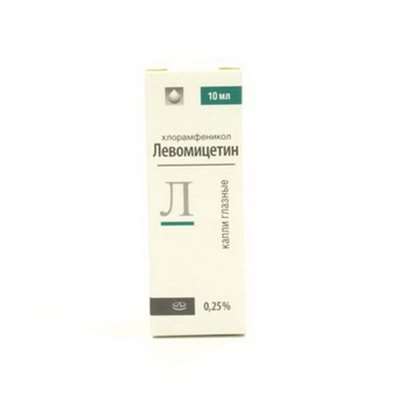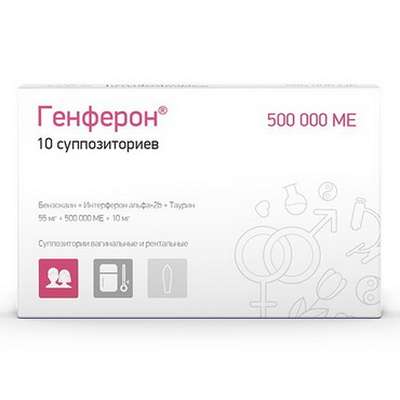Instruction for use: Neupro
I want this, give me price
Dosage form: Transdermal patch
Active substance: Rotigotine
Description of the active substance. The above scientific information is generalizing and cannot be used to decide on the feasibility of using a particular medicinal product.
Indications
Idiopathic Parkinson's disease - monotherapy of early stages without joint application with levodopa preparations or in combination with levodopa preparations (as the disease progresses), incl. In the late stages, where the therapeutic effect of levodopa becomes unstable and motor fluctuations occur (the phenomenon of depletion of a single dose of levodopa, the phenomenon of "on-off").
Contraindications
Increased sensitivity to rotigotine; MRI or cardioversion during treatment (see "Special instructions"); Age under 18 years (no data on safety and efficacy).
Application in pregnancy and breastfeeding
The action category for fetus by FDA is C.
Controlled studies of rotigotine in pregnant women have not been conducted. The results of preclinical studies showed no signs of teratogenic activity, however, certain doses exerted embryotoxic effects. The potential risk of embryotoxic action for a person remains unknown. Rotigotine should not be used during pregnancy.
Rotigotine reduces the secretion of prolactin and reduces the amount of breast milk. According to preclinical studies, rotigotine and / or its metabolites are excreted in breast milk. Due to the lack of data on the excretion of rotigotine in human milk, breastfeeding should be discontinued.
Women of childbearing age. In women with preserved reproductive function against the background of treatment with rotigotine, adequate contraception should be used to prevent pregnancy.
Fertility. The effect of rotigotine on reproductive performance was studied in rats, rabbits and mice. The teratogenic effect of rotigotine was not detected in all three species of animals, but embryotoxicity was noted in rats and mice at doses toxic to pregnant females.
Rotigotine did not affect the fertility of male mice in mice, but clearly decreased the fertility of female individuals in rats and mice as a result of the effect on the prolactin level, which plays an important role in rodents.
Side effects
In clinical trials in patients with Parkinson's disease, nausea, vomiting, skin reactions at places of PT bonding, drowsiness, dizziness, headache were most common (more than 10% of patients).
At the beginning of therapy, nausea and vomiting of mild to moderate severity may occur, these phenomena quickly pass, even if treatment continues.
The summary of adverse reactions noted in all studies in patients with a UPS is presented below in accordance with the generally accepted system-body classification of MedDRA and the WHO classification by frequency: very often (≥1/10); Often (≥1 / 100, <1/10); Infrequently (≥1 / 1000, <1/100); Rarely (≥1 / 10000, <1/1000); Very rarely (<1/10000); Frequency is not known (can not be estimated from available data). In each frequency range, adverse reactions are listed in order of decreasing clinical importance.
From the immune system: infrequently - hypersensitivity, which can manifest as angioedema, edema of the tongue and lips.
Disorders of the psyche: Often, visual and auditory impairments (including visual and auditory hallucinations, visual illusions), sleep disturbances, insomnia, nightmares, pathological dreams, impulse disorders, including pathological attraction to gambling, pandering-repeated pointless manipulations with objects, An irresistible attraction to shopping (oniomania); Infrequently - seizures of increased sleepiness, sudden daytime sleep, paranoid psychosis, violations of sexual desire (hypersexuality and libido increase), confusion, disorientation, agitation; Rarely - psychotic disorders, obsessive-compulsive disorders, aggressive behavior / aggression, excessive consumption of food, compulsive overeating, delirium, delirium; Frequency is unknown - syndrome of impaired dopamine regulation.
From the nervous system: very often - drowsiness, headache, dizziness; Often - a violation of consciousness (syncope, vasovagal syncope, loss of consciousness), dyskinesia, postural dizziness, lethargy; Rarely - cramps, irritability.
From the side of the organ of vision: infrequently - a violation of visual perception, a photopsy (false sensation of light in the eyes), a violation of visual acuity.
From the side of the hearing organ and labyrinthine disturbances: often - vertigo.
From the heart: often - a feeling of palpitations; Infrequently - atrial fibrillation; Rarely - supraventricular tachycardia.
From the side of the vessels: often - postural hypotension, increased blood pressure; Infrequently - a decrease in blood pressure.
From the respiratory system, chest and mediastinum: often - hiccups.
From the digestive tract: very often - nausea, vomiting; Often - constipation, dry mouth, indigestion; Infrequently - pain in the abdomen.
From the skin and subcutaneous tissues: often - erythema, hyperhidrosis, itchy skin; Infrequently - generalized skin itching, skin irritation, contact dermatitis; Rarely - generalized rash.
From the genitals and the breast: infrequently - erectile dysfunction.
General disorders and disorders at the injection site: very often reactions at the site of application (erythema, itching, irritation, burning sensation, dermatitis, papular or vesicular rash, skin discoloration, pain, inflammation, eczema, swelling, abrasion, urticaria, hypersensitivity) ; Often - peripheral edema, asthenic condition (increased fatigue, asthenia, malaise).
Data from laboratory and instrumental examinations: often - weight loss, increased activity of CK; Infrequently, an increase in the activity of liver enzymes, incl. ALT, ACT, GGT, weight gain, tachycardia.
Trauma, intoxication and complications of manipulation: often - falls.
Description of individual adverse reactions
In clinical trials, with alternation of the application site, local reactions were noted in 35.7% of the 830 patients with UPS who had used PT with rotigotine. In the overwhelming majority, these reactions were of mild or moderate severity and limited to the PT attachment zone. In 4,3% of patients, local reactions caused the refusal of treatment.
During the application of rotigotine, there was increased drowsiness (including during the day), including episodes of sudden falling asleep. In some cases, episodes of sudden falling asleep occurred while driving the car and led to traffic accidents.
Disorders of motivations. In the treatment of dopamine receptor agonists, including rotigotine, there was a pathological attraction to gambling, hypersexuality, increased sex drive, compulsive expenditure and purchases, compulsive overeating.
Special populations. The increase in the level of CKD was found in clinical trials in Japan (3.4% of patients receiving rotigotine and 1.9% of patients receiving placebo). Most of the reported cases were of moderate severity and occurred over time.
Precautionary measures
If the therapeutic effect of rotigotine is insufficient, the use of other dopamine receptor agonists is possible.
To avoid skin burns, MRI should be removed prior to an MRI or cardioversion.
Orthostatic hypotension. It is known that dopamine receptor agonists disrupt the systemic regulation of AD, causing postural / orthostatic hypotension. This effect was also observed in patients treated with rotigotine, but in the study, the incidence of these events was comparable to that of placebo.
It is recommended to monitor blood pressure, especially at the beginning of treatment, due to the general risk of developing orthostatic hypotension associated with dopaminergic therapy.
Fainting. During clinical trials, syncope was observed, but their incidence was comparable to that of placebo.
Episodes of daytime sleep and increased sleepiness. When rotigotine was used, there was increased drowsiness and episodes of sudden falling asleep. Episodes of sudden falling asleep were also noted during daytime activity, in some cases without any symptom-precursors. Doctors who administer rotigotine throughout the course of therapy should regularly assess the condition of patients with regard to increased drowsiness, Patients may not be aware of the presence of this symptom until they are directly asked about it. If the patient has manifestations of increased sleepiness, it is necessary to decide whether to lower the dose or stop therapy.
Malignant neuroleptic syndrome. With the abrupt withdrawal of drugs from the dopamine receptor agonist group, there was a development of symptoms resembling a malignant neuroleptic syndrome. Because of these considerations, it is recommended to gradually reduce the dose and discontinue therapy.
Pathological thinking and behavior. Reported a violation of thinking and behavior, including paranoid ideas, delusions, hallucinations, confusion, psychotic behavior, disorientation, agitation or aggressive behavior and delirium.
Fibrotic complications. In some patients receiving dopamine receptor agonists from the group of ergot alkaloids, there have been cases of development of pulmonary infiltrates, damage to the valvular apparatus of the heart, pericarditis, pleural effusion, pleural thickening, retroperitoneal fibrosis.
These complications can be resolved when discontinuation of the use of these funds, however, full recovery is not observed in all cases. It is believed that the development of these effects is associated with the ergoline structure of ergot derivatives, but it is not known whether dopamine receptor agonists that are not related to ergot derivatives can cause the above effects.
Neuroleptic means. Patients receiving dopamine receptor agonists should not be prescribed antipsychotics as antiemetics.
Observation with an ophthalmologist. It is recommended that the ophthalmologist regularly monitor, especially if vision disorders occur.
Use of heat. The field of application of PT with rotigotine should not be exposed to external heat (excessive sunlight, electric heaters and other sources of heat, such as a sauna, hot tubs).
Reactions in the application site. There may be reactions at the site of application of rotigotine, usually they are of mild to moderate severity. It is recommended to change the place of application every day and observe the 14-day interval before re-applying to the same skin area.
If reactions that persist for several days and persistent or increased severity of these reactions develop, or the area of their spread exceeds the application limits, it is necessary to evaluate the benefit and risk of further use of rotigotine in the form of PT for such a patient. When the generalized skin reaction appears on the background of treatment with rotigotine (for example, an allergic rash - erythematous, macular, papular, - or skin itching), rotigotine should be discarded.
Dopaminergic adverse reactions. It should be borne in mind that with the use of rotigotine in combination with levodopa, the incidence of such dopaminergic adverse reactions, such as hallucinations, dyskinesia and peripheral edema, increases.
Peripheral edema. In clinical trials of patients with Parkinson's disease, the peripheral edema rate of about 4%, noted for 6 months of the study, remained unchanged throughout the subsequent follow-up period for 36 months.
Disorders of motivations. Monitoring is needed to identify impulse disorders. Patients and caregivers should be aware that behavioral disorders such as pathological attraction to gambling, increased sex drive, hypersexuality, compulsive expenditure or purchases, excessive uninterrupted food consumption and compulsive overeating, may appear in patients taking Agonists of dopamine receptors, incl. Rotigotine. When these symptoms appear, you need to decide whether to reduce the dose or gradually stop taking.
Influence on the ability to drive and work with machinery. Rotigotine can significantly affect the ability to drive and work with machinery.
Patients with increased drowsiness and / or episodes of sudden daytime sleep should be informed that they need to exclude driving and activities such that reducing the concentration can expose themselves or others to the risk of serious injury or death Eg management of production mechanisms).

 Cart
Cart





